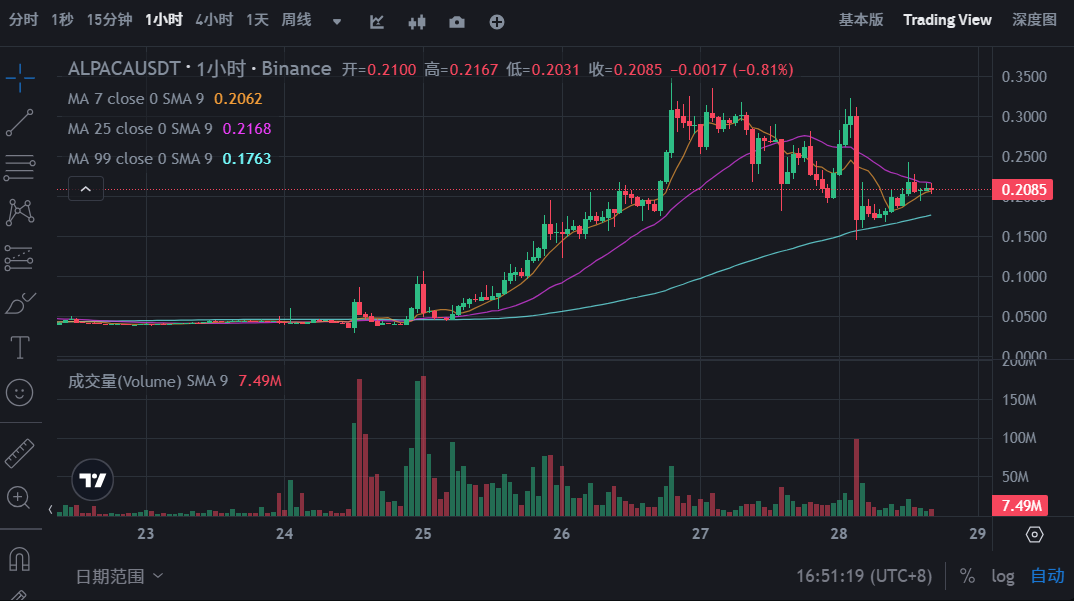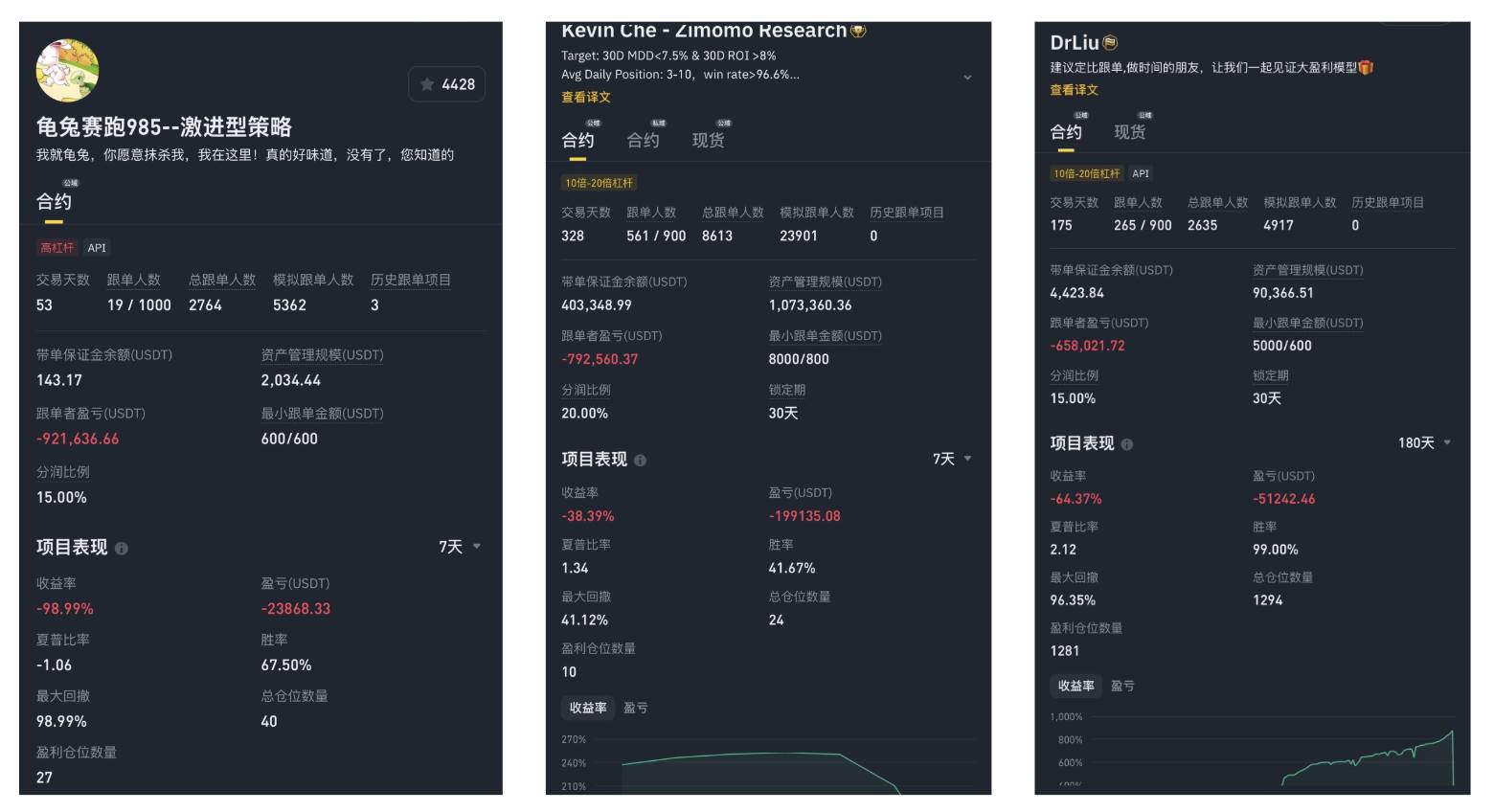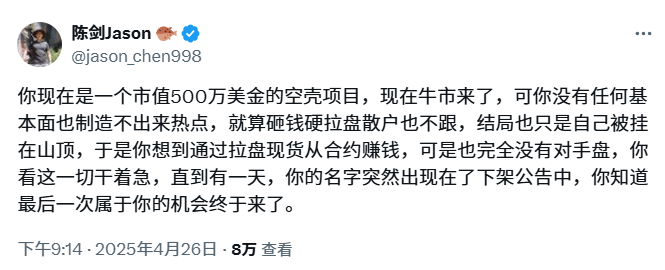Written by: TechFlow
These days, the soon-to-be delisted "Alpaca token" $ALPACA has been active in the market center stage, stirring up hundreds of billions of dollars in total trading volume with a circulation market value of $30 million.
On April 24, Binance announced the delisting of four tokens, including Alpaca Finance ($ALPACA), on May 2.
The news of "delisting from Binance" is usually a huge negative for the project - delisting means reduced liquidity, shrinking trading volume, and token prices often plummet and may never recover.
However, after the delisting news was released, $ALPACA experienced around a 30% drop (based on Binance spot exchange) but then rapidly surged nearly 12 times within three days, from $0.029 to a high of $0.3477. Meanwhile, $ALPACA's open interest (OI) far exceeded its token market value by several times, and the "meat grinder" game of long and short positions around $ALPACA began.

Accelerated Rate Settlement, More Intense Long and Short Battle
Subsequently, Binance adjusted the funding rate rules, shortening the capped rate cycle to settlement every hour (up to 2%), further intensifying the long and short battle. Longs not only profited from pulling up the price but could also continuously "eat" high funding rates, gaining both ways within days, with $ALPACA price continuously hovering at high levels for nearly four days.
Settling at -2% per hour means that under 1x leverage, short sellers would lose at least 48% of their principal in a day's position. Yet, despite such high rates, funds still rushed to short.
In this intense battle, some discovered that traders with millions of dollars in follow-up positions were continuously shorting $ALPACA at high leverage, ultimately liquidating with followers' millions.

On April 29, Binance raised the $ALPACA contract rate cap to ±4%. For shorts, this would multiply shorting costs, but contrary to expectations, $ALPACA's price "counterintuitively" plummeted from $0.27 to around $0.067.

No Absolute Trading Rules
As trading volume and attention gradually shift, the $ALPACA story might be coming to an end.
Looking back at this billion-level farce, $ALPACA these days was perhaps a MEME in some ways - the delisting negative news brought massive attention, fully demonstrating the principle that "being black-famous is still fame" in price fluctuations. With relatively low circulation market value (less than $4 million at its lowest) in the same-level environment, highly controlled chips, and price volatility constantly stimulating players' nerves, even the "alpaca" image seems connected to meme.
Though the image is cute, for users truly participating in this battle, these days might only be described as "bloody".
Experiencing negative news causing crazy price pulls, and "short squeeze" news causing smooth declines, $ALPACA's complex trend in these days overturned the usual "sell the news" logic and many people's positions.
Clearly, the boundaries between "positive" and "negative" news are gradually blurring, and previous single judgment logic is no longer applicable to the constantly evolving market. Instead, violent market manipulation playing with human nature is prevalent, with continuously refreshing liquidation data gradually occupying the market center. Describing this evolution direction as "savage growth" might be most appropriate.
However, things are two-sided. While some feel confused, others feel excited. This farce is not necessarily bad for everyone. For many participants seeking price volatility stimulation and with exceptional abilities, the alpaca's movement might even be a long-awaited opportunity to make big money.
Some voices suggest that the follow-up traders shorting without cost using followers' money is a hunt for retail investor funds, echoing a movie line: "Gentlemen's money returned in full, people's money split 30-70". The truth of such claims is hard to determine momentarily, but one can be sure that even if the reality is not so dark, the ultimate winner in this manipulation will not be ordinary users.
Under the premise that corresponding regulatory measures are not yet perfect, $ALPACA might not be the last crazy manipulation in this market.
By the time of writing, $ALPACA's price continues to fluctuate dramatically, and perhaps before its official delisting, there will be more exciting "performances".
In this turbulent price battle, it's hard for naive participants to find their ground. Under the siege of attention and liquidity, perhaps watching more and acting less is the most positive EV strategy for retail investors. Those who see big news and abnormal price movements and think "opportunity has arrived" are not just retail investors, but also long-hungry project parties.







